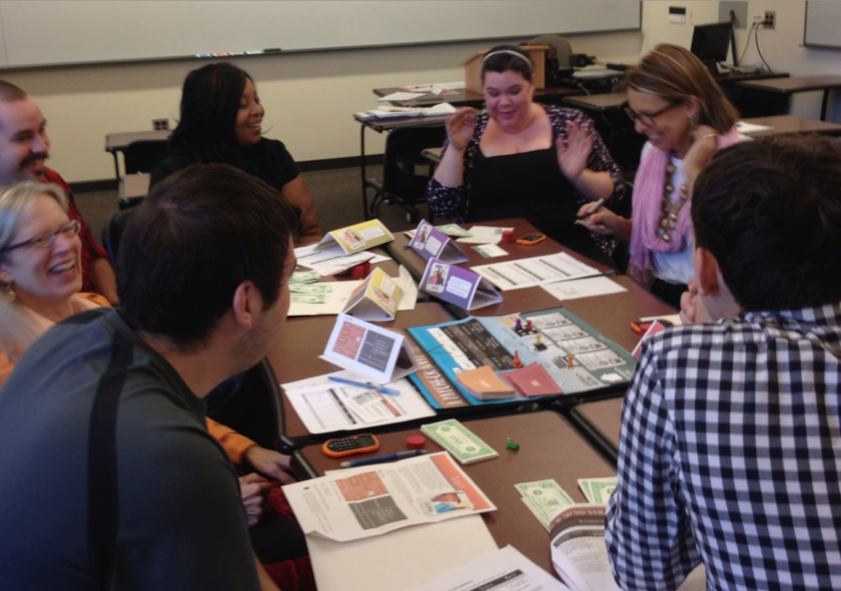I’ve been in the learning design field for many years (more than 25 though I swear I look really young). This week I had a “first” in terms of how someone described what we’d created: “mind-blowing”
We were doing our final play test of A Paycheck Away and each player was invited to share a one-word description of the game-play experience they’d just completed. We had 8 players testing the game, which was essentially a full-blown dry run of the game we will unveil at the Indianapolis Spirit and Place Festival on November 9th.

The players all had great things to say about the game play experience, but, for me, by far the best description was “mind-blowing.” It was gratifying. It made me feel successful as a game designer. As I observed the game play, I could see the game packed a lot of punch, people connected with it, and it opened up a door to very rich discussion of the issue the game was about: homelessness – which was our goal in creating the game. We wanted to change the social conversation on homelessness. We designed a game around this goal… and we hit our mark.
The topics of games and gamification are incredibly hot right now as is the whole idea of Games for Change (courtesy of Jane McGonigal and many other amazing game designers). But I want to put up a caution sign. You cannot assume that creating a game or gamifying a learning experience will translate into business results… which is the intended purpose of most learning solutions requested by corporate clients. How do we measure the success of a game or gamification effort? Gratifying as the description “mind-blowing” was to me, I cannot assume that this level of immersion in the game experience will translate into business outcomes.
So…fast forward to a conversation I had this morning with Scott Thomas of ExactTarget. We created a game using our Knowledge Guru game engine for Scott to support a new product they were rolling out. The goal of the game was to help employees and partners better position the product with customers and gain knowledge of a new industry for them: mobile marketing. Scott had played one of our public Knowledge Guru games, had fun with it, and invited us to create a game for ExactTarget’s launch.
Scott told me about how amazing the game was for his organization – and the BUSINESS RESULTS it produced. Here’s comments he made to me (and told me I could share):
Of all the launches we’ve done in the past 2 years (11 in those 2 years alone), our sales team has built the quickest pipeline for this product. We are closing business faster than on any launch in the last 2-3 years.
The average contract value, when it comes to comparable products, is almost 2x more than previous ones.
On our support side, first-call resolution of a problem or question is up 45% over the previous similar product we had. Every time a support team member touches a case, it costs us $35 so this is a big deal.
If I get told once, I get told twenty times, “I have never felt more confident or comfortable with a product before.”
Scott’s focus was on business results. He shared many more stories and quotes about the game’s success. Regarding all these results he told me, “I know without a doubt that the game was a big reason. They (employees, partners) felt confident and knowledgeable.” That translated into sales success – business results.
As people get all excited about the power of games, they tend to focus on the fun of games and the way games people engaged. But fun and engagement alone are not enough. These elements only matter if the game design is smart enough and well-thought out enough that it revolves around the desired business results or business impact. Leaderboards are fun to track, achievements are nice to earn… but does the game-play experience itself get you where you need to go in terms of job performance or life performance? Don’t be tempted to simply slap on some game elements and believe that you’ll improve outcomes. Good design is still good design – whether it’s game design or another type of learning solution.
I want “mind-blowing” every time if I can get it. But if “mind-blowing” doesn’t translate to changed behavior, new ideas, or different outcomes, then it is no better than “Click Next to Continue.”


